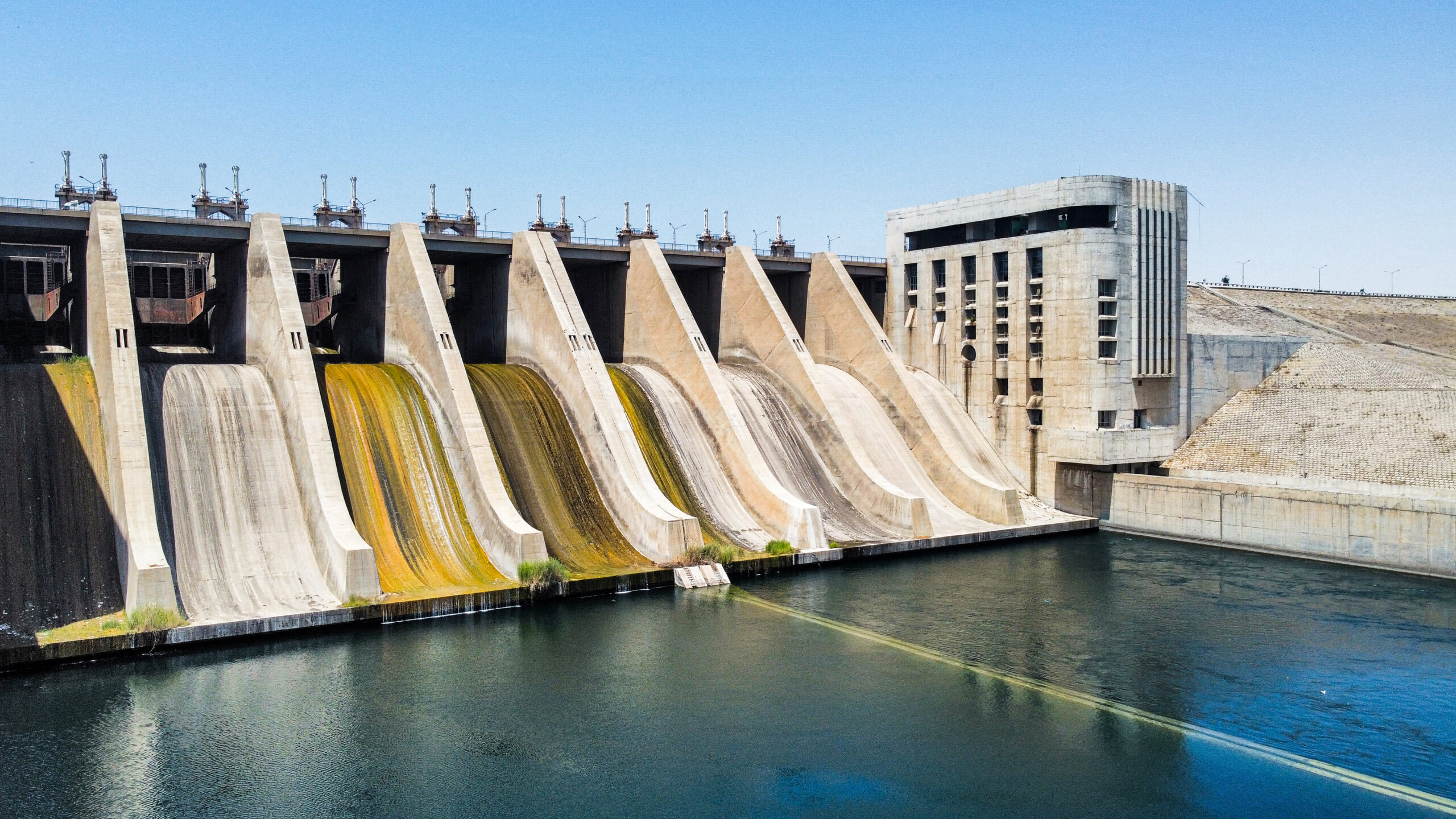
165 Dams: (Pre-Conflict A strong base for rehabilitation and energy-water planning.
90% Pre-War Water Access: High national coverage offers a proven baseline for rebuilding.
50%+ Infrastructure Inoperable Major gaps in treatment and sanitation urgently need attention.
63,000 ha of Irrigated Land Restored Raqqa’s success shows the scalability of recovery initiatives.
In Syria, water has always been a lifeline—sustaining agriculture, industry, and public health. From the vast Euphrates-fed irrigation networks to the dam-powered electricity grids, the country’s water infrastructure once anchored national development. But today, water engineering has emerged not just as a technical challenge, but as a national imperative. Reviving this sector is essential to restore public services, revitalize rural economies, and safeguard long-term resilience in the face of climate stress and post-conflict fragility.
Before the war, Syria maintained a highly integrated water management system. With 165 dams storing up to 19.6 billion cubic meters, the country drew upon both surface and groundwater to serve over 90% of its population with piped water and basic sanitation [1][7]. Major hydropower installations like Tabqa Dam (11.7 km³) and Tishrin Dam (2.5 km³) were not only strategic energy assets but also essential for water security. Water was both widespread and systematized—supporting domestic use, irrigation, and energy production with centralized planning.
However, more than a decade of war has disrupted this equilibrium. Today, over half of all water treatment plants are damaged or non-functional, and access to safe drinking water has dropped by roughly 40% in many regions [1][6]. More than 14 million Syrians now lack reliable access to safe water, according to UNDP assessments [2][11]. Urban centers like Aleppo and rural governorates in the northeast report frequent water outages, contaminated sources, and collapsing sanitation systems. Meanwhile, groundwater extraction has surged unsustainably, driven by damaged surface networks and weakened oversight—raising alarms over long-term depletion, especially along the Euphrates basin [22].
The health risks are severe. Recent years have seen the resurgence of waterborne diseases like cholera, linked directly to unsafe water and sanitation gaps [6]. The degradation of water infrastructure now represents one of the most immediate and visible threats to public health, especially for children, displaced families, and agriculture-dependent communities.
Yet the recovery potential is equally significant. In Raqqa alone, a canal rehabilitation project restored irrigation access to 63,000 hectares—benefiting 21,000 farming families and reactivating idle farmland [9]. Similar projects across Homs, Deir ez-Zor, and Hassakeh are showing that targeted investment in water systems produces rapid, tangible returns.
U.S. expertise and innovation align seamlessly with these recovery needs. From dam safety consulting and hydropower optimization to urban wastewater management and smart irrigation technologies, American firms are well-positioned to lead in modernizing Syria’s water systems. In particular, partnerships focused on:
…can deliver results across multiple sectors—from health to agriculture to economic productivity.
For development partners and U.S. institutions alike, water engineering in Syria is not just about pipes and pumps—it’s about people, public health, and the recovery of national capacity. It is one of the few sectors where targeted investment can simultaneously alleviate humanitarian need, stimulate local employment, and lay the foundation for long-term resilience.
The revival of Syria’s water infrastructure will require more than funding—it demands trusted partnerships, technical leadership, and long-term commitment. The U.S.-Syria Business Council offers a unique platform for companies, engineers, investors, and development professionals to engage in this vital sector.
As a member of the USSBC, you gain:
Whether you’re a U.S. firm with advanced water tech or a development stakeholder looking to align with high-impact infrastructure work, the USSBC is your gateway to responsible engagement.
Join us. Help reclaim Syria’s water future—drop by drop, project by project.